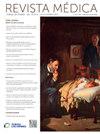Síndrome vasopléjico inducido por protamina. La importancia del ECLS con ECMO y protocolo CALS en casos complejos
IF 0.2
Q4 MEDICINE, GENERAL & INTERNAL
引用次数: 0
Abstract
Objective
To describe a case of cardiac arrest (CA) associated with protamine induced vasoplegic syndrome (PIVS), managed with the Cardiac Advanced Life Support (CALS) protocol and extracorporeal life support (ECLS) using extracorporeal membrane oxygenation (ECMO).
Case report
A 51-year-old male patient with multiple valvular diseases underwent mitral valve replacement and tricuspid annuloplasty. In the immediate postoperative period, while still in the operating room, he developed severe protamine-induced hypotension, followed by asystolic CA. He was managed with direct cardiac massage, reconnection to extracorporeal circulation (ECC), and vasopressor infusion, achieving return of spontaneous circulation (ROSC) after 15 minutes. Following the patient's hemodynamic stabilization, sternotomy closure and ECC discontinuation were performed. In the Coronary Intensive Care Unit, he experienced another asystolic CA, unresponsive to advanced resuscitation maneuvers. A re-sternotomy and ECLS with femoral vein-arterial ECMO (FV-FA) were performed, achieving ROSC. During the intervention, a left ventricular wall rupture secondary to direct massage was identified and successfully repaired. The patient remained on ECMO for 12 days and evolved without neurological sequelae.
Discussion
PIVS was the triggering factor, worsened by multifactorial refractory shock. The implementation of ECLS with ECMO and a trained multidisciplinary team was crucial for the patient's survival.
Conclusions
ECLS with ECMO, used within 30 minutes, in conjunction with the CALS protocol, improves survival and prevents neurological sequelae in cases with protamine-induced vasoplegic syndrome.
由蛋白质引起的血管痉挛综合征。ECLS与ECMO和CALS协议在复杂情况下的重要性
目的描述1例心脏骤停(CA)合并鱼精蛋白诱导的血管截瘫综合征(PIVS),采用心脏高级生命支持(CALS)方案和体外膜氧合(ECMO)的体外生命支持(ECLS)治疗。一例51岁男性多瓣膜疾病患者行二尖瓣置换术和三尖瓣成形术。术后立即在手术室内,患者出现了严重的蛋白蛋白性低血压,随后出现了无收缩期CA。患者接受心脏直接按摩、重新连接体外循环(ECC)和血管加压剂输注,15分钟后恢复了自然循环(ROSC)。在患者血流动力学稳定后,进行胸骨切开术闭合和ECC停药。在冠状动脉重症监护室,他经历了另一次心脏骤停,对高级复苏操作无反应。经胸骨再切开和ECLS联合股静脉-动脉ECMO (FV-FA),达到ROSC。在干预期间,发现了直接按摩引起的左心室壁破裂并成功修复。患者持续ECMO 12天,无神经系统后遗症。pivs为触发因素,多因素难治性休克加重pivs。ECLS与ECMO的实施和训练有素的多学科团队对患者的生存至关重要。结论:在30分钟内使用ECMO与CALS方案联合使用secls可提高蛋白蛋白诱导的血管截瘫综合征患者的生存率并预防神经系统后遗症。
本文章由计算机程序翻译,如有差异,请以英文原文为准。
求助全文
约1分钟内获得全文
求助全文
来源期刊

Revista Medica Clinica Las Condes
MEDICINE, GENERAL & INTERNAL-
CiteScore
0.80
自引率
0.00%
发文量
65
审稿时长
81 days
 求助内容:
求助内容: 应助结果提醒方式:
应助结果提醒方式:


